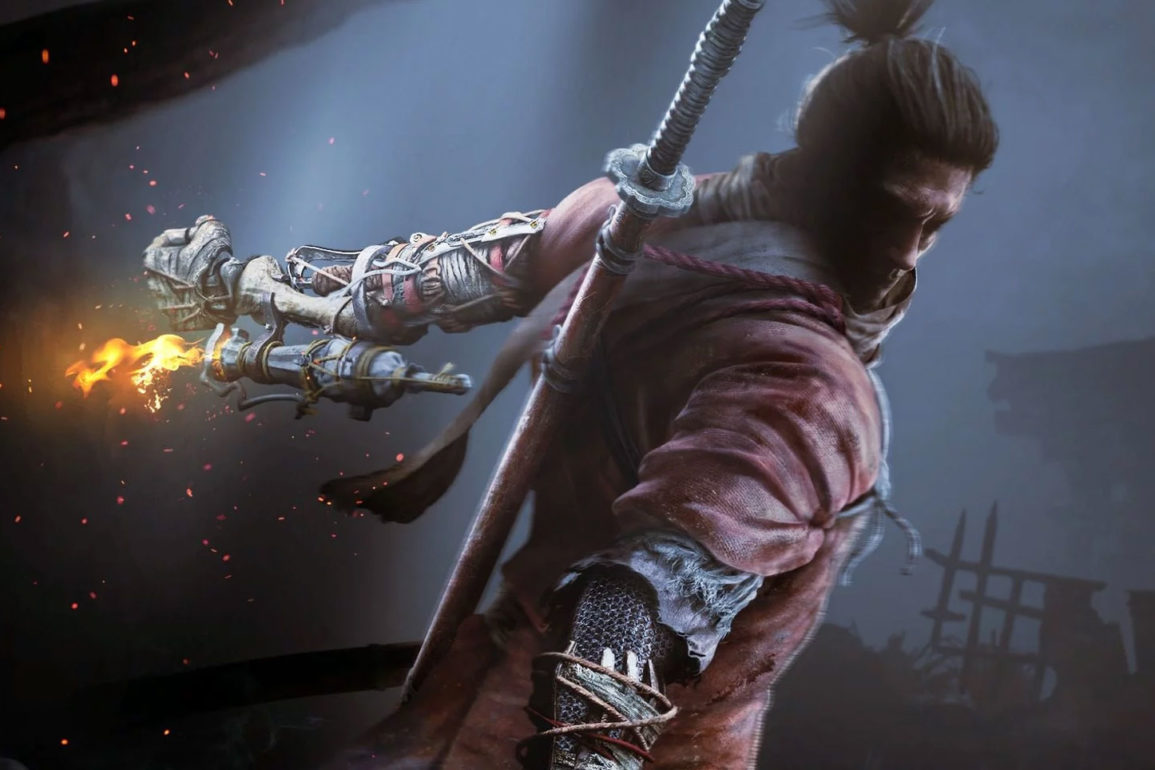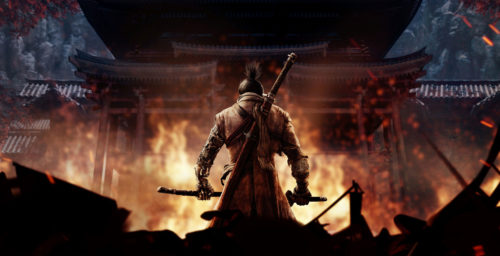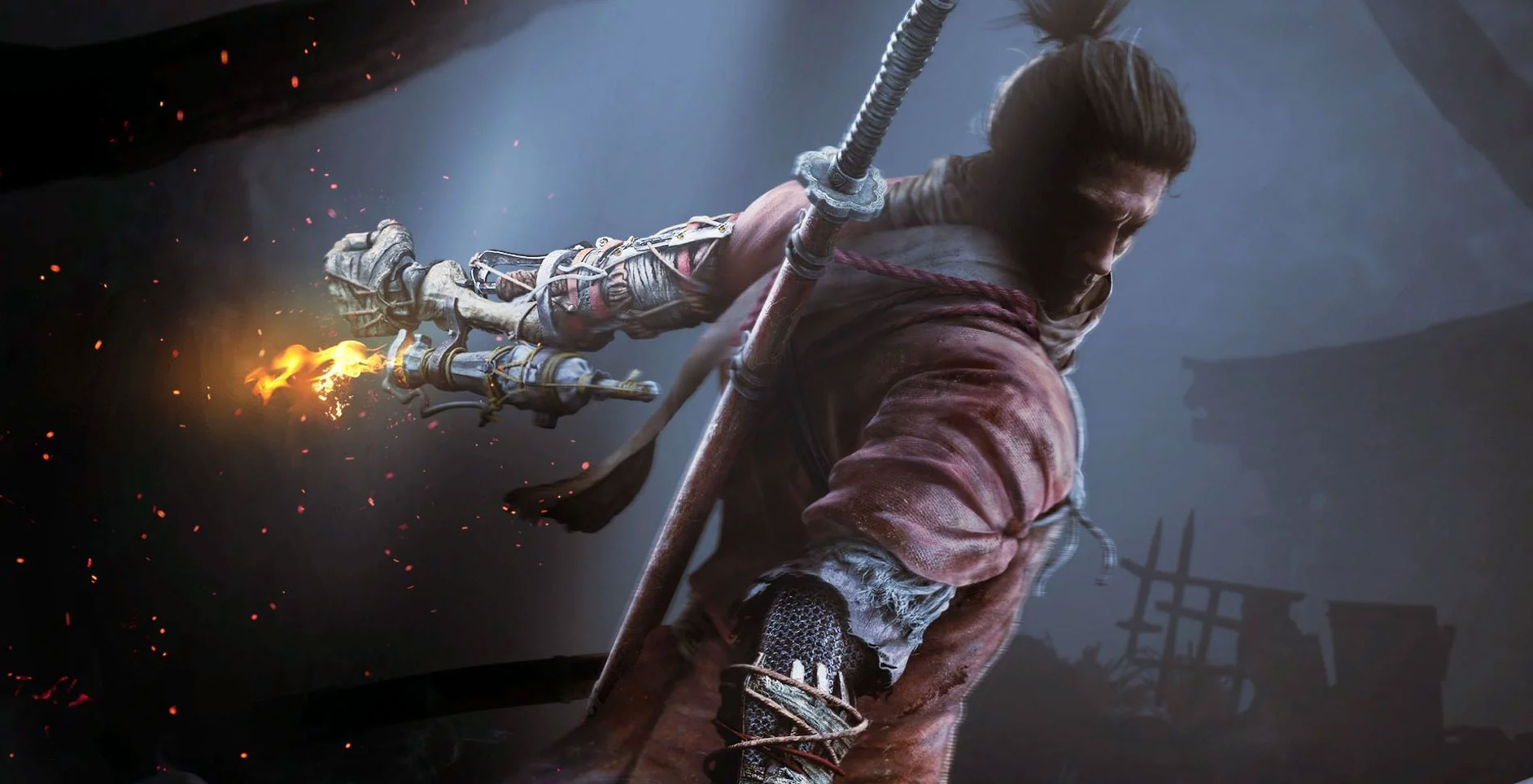I don’t envy FromSoftware in their making of Sekiro. On one hand, the developer has amassed an almost cult-like following with their Dark Souls and Bloodborne games, which are brutally difficult but ultimately rewarding. On the other, changing the formula up so drastically is bound to be divisive amongst those fans. Sekiro: Shadows Die Twice, much like Bloodborne before it, attempts to depart even further from the formula that made FromSoftware such a popular team of creatives – and as a result, they’ve created something truly special.
Taking place in a reimagined Sengoku period of Japan, Sekiro: Shadows Die Twice follows the plight of a nameless shinobi. During the opening moments of the game, the shinobi’s lord is kidnapped, and his arm severed, left for dead during a major conflict. Picking up sometime after, the shinobi is saved by a mysterious man who has fitted him with a prosthetic arm and given him the name of “Sekiro”. Armed with just a katana and his prosthetic, Sekiro embarks on a journey to rescue his liege and seek revenge on the one who took his arm. It’s simple but effective.
Being a FromSoftware game from Hidetaka Miyazaki, you’d be forgiven for thinking Sekiro is essentially a Dark Souls or Bloodborne game but set in Feudal Japan. Sekiro is an entirely different beast, however, and is bound to divide fans as such. The game is eager to step out of the shadow of its pedigree and this arguably begins with the way it tells its story. Rapacious lore enthusiasts may be a little bit disappointed to discover that most of Sekiro’s plot is told to you plainly through files and cinematics. Perhaps there’s more here that I’m missing, but it seems straightforward.
From the moment you are thrown into the world, it’s incredibly inviting to the point where most players will just want to explore at their own leisure. You’ll miss several items or even a few surprises on your first run through a new area, and it’s fun to return to continue digging into the world of Sekiro. It’s by no means the biggest open world in a game, but it’s the sheer density of it all that’s especially impressive. It’s weirdly satisfying to discover a new path to backtrack through, to enter a creepy cave and discover a terrifying new enemy. Purists need not fret, though, as there’s no map here and as such your journey never feels linear or forced.
Thankfully to aid you in your exploration there’s a nice selection of techniques and equipment that give Sekiro an edge over its predecessors. You can scale most walls and grab onto ledges to reach higher ground. It’s not as effective as the climbing mechanics in games like Breath of the Wild or the new wave of Assassin’s Creed games, but it still opens levels up vertically and provides more flexibility on how you’ll pick your battles or if you’ll even pick them at all.
This trend continues with the single biggest game changer in Sekiro – the grappling hook. An absolute joy to wield, the new tool gives your shinobi heaps of opportunity to not only move through the world quickly but also retreat if need be. Stringing together jumps with the grappling hooks to the point where you feel like you’re flying is sublime and there are points where it can even be used in combat too. As you’d imagine in a game like this, you will be dying a lot. And with those deaths comes inevitable retread of ground you’ve already explored. The flexible climbing and mobility options you’re given with the grappling hook makes these moments enjoyable rather than a chore.
But of course, if you’re interested in Sekiro you’re probably interested in the combat – and it absolutely delivers. Your main weapon is a katana, which means a lot of the combat revolves around attacking your enemies to offset their poise and balance, which will eventually allow you to deal a killing or devastating blow. What this means is that Sekiro favours those who play offensively as their main form of defense. You’ll want to overwhelm your opponents by attacking them, and not letting up your defense to allow them to regain their posture. If they attack, dodging or running away (while possible) will only give them the opportunity to regain their posture. Parrying, and following up immediately gives them little chance to recover and is the quickest (and sometimes only) way to success.
It sounds a little bit intimidating and it is, but the enemy design meshes beautifully with the style of combat to provide a synergy that can only be described as fair. Some action games, even some from this developer, can sometimes feel unwieldy, where you’ll take a heap of damage owing to janky animations and sloppy controls. Sekiro is the opposite, every time you take damage it feels like it’s because of an error in judgment and not because of the game. Similarly, the way the game forces you to get better as your encounters ramp up in intensity gives a real sense of accomplishment and progression that, if it weren’t for Devil May Cry earlier this month, I’ve not felt in games for months.
Perhaps the biggest change in Sekiro is the move away from the heavier, more RPG elements of the game when compared to games like Dark Souls. Rather than have experience points, equipment load-outs and statistics to mull over, Sekiro has a single sword, some attachments for your prosthetic arm and numerous skill trees. It’s undeniably simpler than its predecessors and bound to kill the replayability for some of the more diehard fans, but it also makes the game much more approachable without sacrificing difficulty.
Stealth is a viable option in Sekiro as well, though it’s not the strongest aspect of the game. Players hoping to clear out an entire outpost of enemies using just stealth will struggle to do so easily, though it is certainly possible. Killing enemies while hidden can either kill them completely or half the health of a more powerful enemy, but it’s hard to pull this off without alerting everyone in the area. Admittedly, you can cheese the stealth system by running away from an area, waiting for everyone to return to their non-aggressive states, and then pick them off one by one. This is a cheap and easy way to play Sekiro, and good for newcomers I suppose, but easily the least fulfilling.
I mentioned before that you’ll die a lot in Sekiro and that’s because there’s a tonne of stuff to fight peppered throughout this bleak world. It’s very hard to talk about it all without ruining aspects of the game, but the game has a great selection of enemies to battle who all fight in their own unique ways and with unique weaponry. The highlight of any action game is the boss battles, and Sekiro doesn’t disappoint in this area either. The total boss count is a little lower than previous games from FromSoftware, but there’s a wide variety of unique, one-off mini-bosses that more than compensate.
The presentation of the game is what brings everything together at the end of the day – though Sekiro’s merits are more artistic than technical. While there’s a distinct lack of visual variety in the early stages of the game, there is still a great sense of atmosphere hammered home by a combination of a strong and authentic soundtrack with mesmerizing lighting and weather effects. As an example, one of the memorable boss battles sees you fighting a monk in a locale raining bright red and orange leaves. It’s beautiful, but I’d be remiss to discuss the performance issues the game has on consoles. If you’re sensitive to framerate drops, Sekiro may irk you, though generally when it matters (like during combat) the game performs well enough.
Sekiro is admittedly lacking the over-the-top spectacle of games like Devil May Cry and God of War but since it substitutes it with such a distinct charisma, it’s hard to be upset about it.











